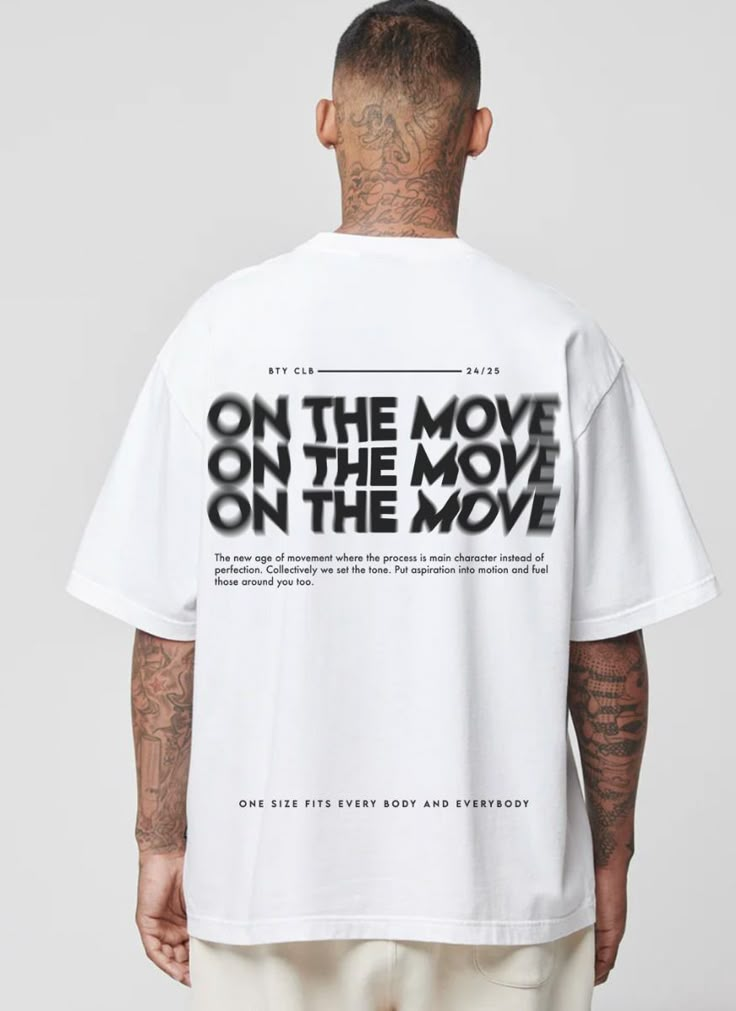
All-Day Street Style: The Most Comfortable T-Shirts of 2025
Graphic tees have long been a staple in fashion, merging art and self-expression with everyday wear. As we step into 2025, these iconic pieces continue
As sustainability takes center stage in the fashion industry, discerning a truly eco-friendly T-shirt from misleading claims has become increasingly important. Consumers are now more aware of environmental impacts and are actively seeking clothing that aligns with ethical and sustainable values. However, with the rise of greenwashing, identifying a genuinely sustainable T-shirt requires a deeper understanding of materials, production methods, and brand transparency.
This article delves into key factors that define a sustainable T-shirt in 2025, covering fabric choices, ethical production, certifications, longevity, and how brands are adapting to sustainability demands.
A T-shirt’s sustainability starts with its fabric composition. The materials used play a crucial role in determining environmental impact, durability, and overall eco-friendliness.
Organic Cotton: A preferred alternative to conventional cotton, organic cotton is grown without synthetic pesticides and fertilizers, significantly reducing water consumption and soil degradation. It offers the same comfort and breathability while being less harmful to the planet.
Hemp Fabric: Recognized for its strength and sustainability, hemp grows rapidly with minimal water and no need for pesticides. It enriches the soil rather than depleting it, making it one of the most sustainable textile options.
Bamboo Fiber: Bamboo is a fast-growing plant that requires little water and no pesticides. Bamboo-based T-shirts are known for their softness, moisture-wicking properties, and biodegradability, making them a sustainable choice.
Recycled Polyester: By repurposing plastic waste into fabric, recycled polyester reduces landfill accumulation and ocean pollution. This synthetic material offers durability while minimizing the environmental burden of new plastic production.
Tencel (Lyocell): Sourced from sustainably managed forests, Tencel is a biodegradable fabric with a low-impact production process. It is breathable, silky smooth, and produced in a closed-loop system that recycles water and solvents.
Sustainability extends beyond materials; the production process also plays a pivotal role. Ethical manufacturing ensures that workers are treated fairly, factories adhere to eco-conscious practices, and waste is minimized.
Fair Trade Practices: Brands committed to fair trade pay workers fair wages, provide safe working conditions, and ensure labor rights. Certifications such as Fair Trade International help consumers identify ethically produced T-shirts.
Zero-Waste Production: Innovative techniques like 3D knitting and precision cutting help minimize fabric waste. Some brands repurpose scraps into new garments, further reducing environmental impact.
Low-Impact Dyeing: Traditional fabric dyeing consumes significant amounts of water and chemicals. Sustainable alternatives include plant-based dyes and waterless dyeing technologies that reduce pollution.
Local and Small-Scale Production: Supporting local and small-scale manufacturers helps reduce the carbon footprint associated with global shipping and transportation. Buying regionally made T-shirts contributes to a lower overall environmental impact.
With the rising popularity of sustainability, some brands use deceptive marketing tactics to appear more eco-friendly than they actually are. Recognizing genuine sustainability efforts is crucial for making informed choices.
Vague or Misleading Labels: Terms like “eco-friendly” or “green” without specific details or certifications can be red flags. Authentic brands provide transparency regarding their sustainability efforts.
Lack of Certifications: Trusted third-party certifications like GOTS (Global Organic Textile Standard), Fair Trade, OEKO-TEX, and Bluesign indicate adherence to high environmental and ethical standards.
Unverified Claims: Brands should back up their sustainability claims with detailed explanations, data, or independent audits. A truly sustainable T-shirt will have traceable and verifiable production information.
A sustainable T-shirt should be designed to last. Durability plays a key role in reducing overconsumption and waste.
High-Quality Stitching: Well-constructed seams and reinforced stitching contribute to the longevity of a garment, preventing premature wear and tear.
Resistant Fabrics: Natural fibers like hemp and high-quality organic cotton tend to be more durable than cheaper alternatives. Recycled fabrics should also maintain strength comparable to virgin materials.
Versatile and Timeless Design: A sustainable wardrobe focuses on timeless fashion over fast trends. Neutral colors, classic cuts, and minimalist designs ensure that a T-shirt remains stylish for years.
Proper Care and Maintenance: Washing clothes at lower temperatures, using eco-friendly detergents, and air-drying instead of tumble drying extend the lifespan of a T-shirt, making it a more sustainable option.
Several factors indicate a brand’s genuine commitment to sustainability. Researching a company’s environmental policies and ethical practices can help distinguish responsible brands from those engaging in greenwashing.
Transparency in Supply Chain: Ethical brands openly share details about material sourcing, production facilities, and sustainability goals. Consumers can often find this information on a brand’s website or product labels.
Commitment to Circular Fashion: Brands embracing circular fashion encourage customers to recycle old T-shirts, offer take-back programs, or design products with end-of-life recyclability in mind.
Carbon Neutral Initiatives: Some companies offset their carbon footprint by investing in reforestation projects, renewable energy, and sustainable production innovations.
Consumer Education: Responsible brands educate their customers on sustainability topics, providing guidance on fabric choices, proper care, and ethical shopping habits.

Graphic tees have long been a staple in fashion, merging art and self-expression with everyday wear. As we step into 2025, these iconic pieces continue

Sustainability has become a core focus in the fashion industry, with eco-friendly clothing gaining significant traction. Among the most sought-after items, sustainable T-shirts stand out

As sustainability takes center stage in the fashion industry, discerning a truly eco-friendly T-shirt from misleading claims has become increasingly important. Consumers are now more